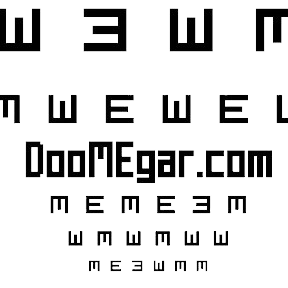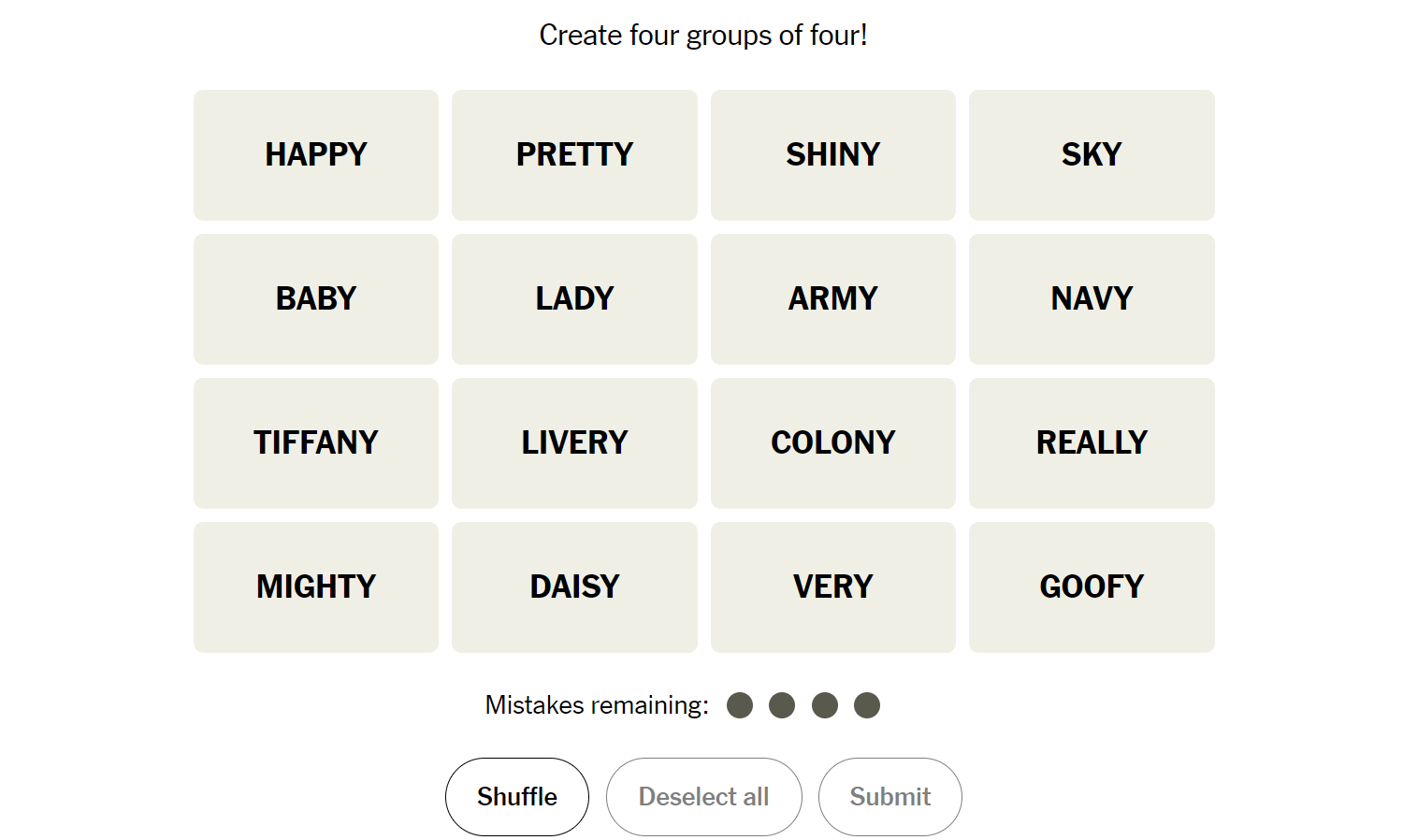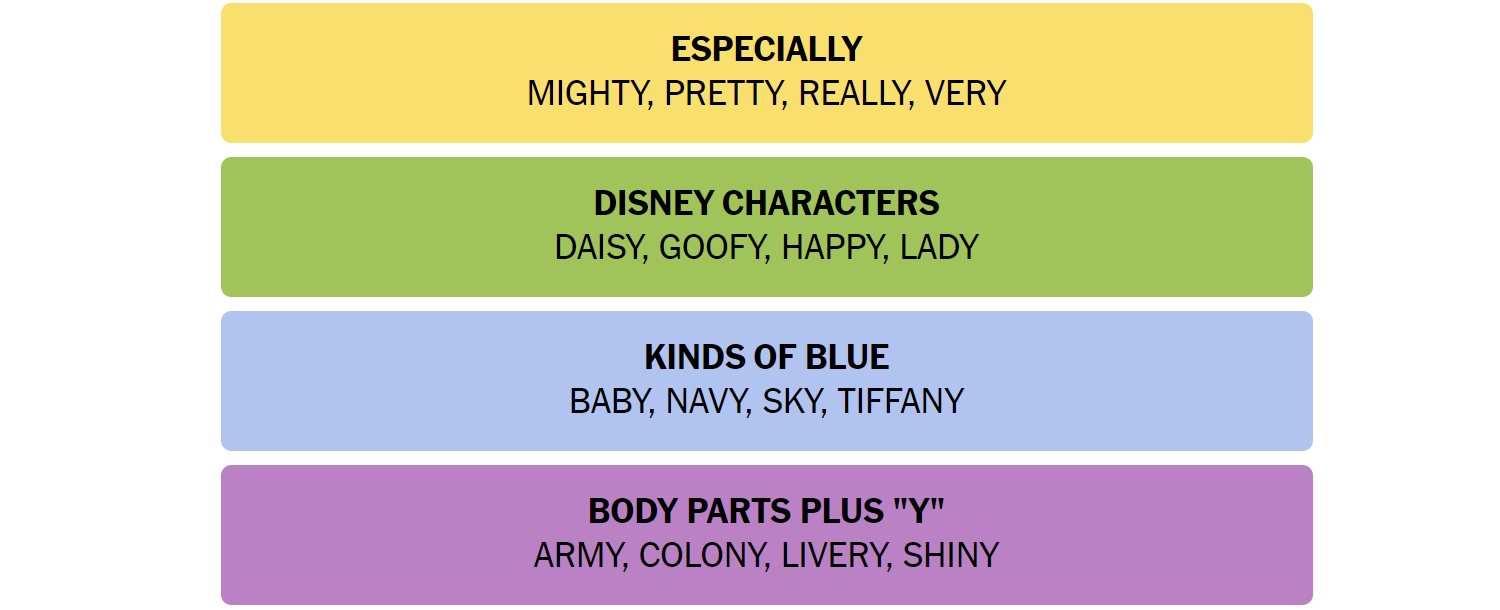Mind the spoilers at the end!
Connections is a game from the New York Times that challenges you to find the association between words. It sounds easy, but it isn’t—Connections categories can be almost anything, and they’re usually quite specific. If you need a hand getting the answers, we’ve got you covered.
What Is Connections?
Connections is a puzzle game from the New York Times. The objective is simple: sort 16 words into groups of 4. Each group of words will be connected by some common idea or theme. That common element could be anything from the number of letters in the words to a common use for all the words. Once you’re confident, select 4 words, then hit “Submit.” You have only four attempts in total, so don’t be too guess-happy.
Hints for Today’s Connections Categories
Here are a few small hints to get you started on the 297th Connections game.
- Yellow: Emphatic.
- Green: Childhood favorites.
- Blue: Ocean, too.
- Purple: Remove something.
What Are Today’s Connections Categories?
If you’re still struggling, the actual categories are:
- Yellow: Especially
- Green: Disney Characters
- Blue: Kinds of Blue
- Purple: Body Parts Plus Y
Today’s Connections Answers
Yellow:
Mighty, Pretty, Really, Very
Green:
Daisy, Goofy, Happy, Lady
Blue:
Baby, Navy, Sky, Tiffany
Purple:
Army, Colony, Livery, Shiny
How Did We Solve This Puzzle?
The very first thing we noticed was that every single word in this puzzle ends in the letter Y. Our gut said that’ll be important at some point.
At first, a lot of the words seemed to be positive or used for emphasis, but a few—namely Goofy—seemed out of place. By happy coincidence, hitting the “Shuffle” button lined up Daisy, Lady, and Goofy and then it hit us—these are Disney characters! The Green category is indeed “Disney Characters,” and includes Daisy, Goofy, Happy, and Lady.
The other words we suspected were related to some kind of positive emphasis (mighty, pretty, really, very) were in the Yellow category, which was aptly named “Especially.” No doubt fans of the sci-fi show Firefly will be disappointed that Shiny was excluded from Yellow, given that it was used in much the same way on that show as the other words in the category.
As usual, the game gets easier with fewer options. Baby, Navy, Sky, and Tiffany are all shades of blue, and are in the Blue category.
Army, Colony, Livery, and Shiny are the only words left. When you remove a y from the end, you may notice that each word is then a body part: arm, colon, liver, and shin. They make up the Purple category, which was “Body Parts Plus Y.”
Connections does occasionally throw this sort of puzzle at you, and they can be difficult to spot if you’re not accustomed to looking for them. Earlier in March, we saw a similar group that was the names of birds, except the last letter had been removed. Loon was loo, hawk was haw, and so on.
How Do You Guess Connections Categories?
There is no quick, reliable way to approach Connections like there is with Wordle, since Connections isn’t algorithmic. However, there are a few things to keep in mind that can help.
- Look for similar parts of speech. Are some words verbs and others nouns? Are some adjectives? Try mentally grouping them based on those categories and see if any other patterns jump out at you.
- Are the words synonyms? Sometimes categories will just be synonyms for a phrase, or very close to synonyms. Don’t rely too closely on this, though. Sometimes Connections will deliberately throw in words that are sometimes synonyms to mislead you.
- Try saying the words. Sometimes, saying the words helps. One puzzle we saw included the words go, rate, faster, clip, pace, speed, move, commute, and hurry—all of which are obviously related to the idea of motion. However, when you say them, it becomes a little more obvious that only four (go, move, hurry, faster) are things you’d actually say to prompt someone to get moving.
- Expect the red herring. Connections usually has words that could be plausibly, yet incorrectly, grouped together. Take the words Bud, Corona, and Light, as an example. You might instinctively see those three words together and assume they’re lumped together in a category related to beer—but they weren’t.
- Look for distinct words. If a word on your board doesn’t have multiple meanings or can really only be used in one context, try using that word as the basis for a category.
If you didn’t solve this one, don’t feel too bad—there’s always tomorrow! And those words may align with a topic you’re interested in, giving you a leg up on the competition.




دیدگاهتان را بنویسید